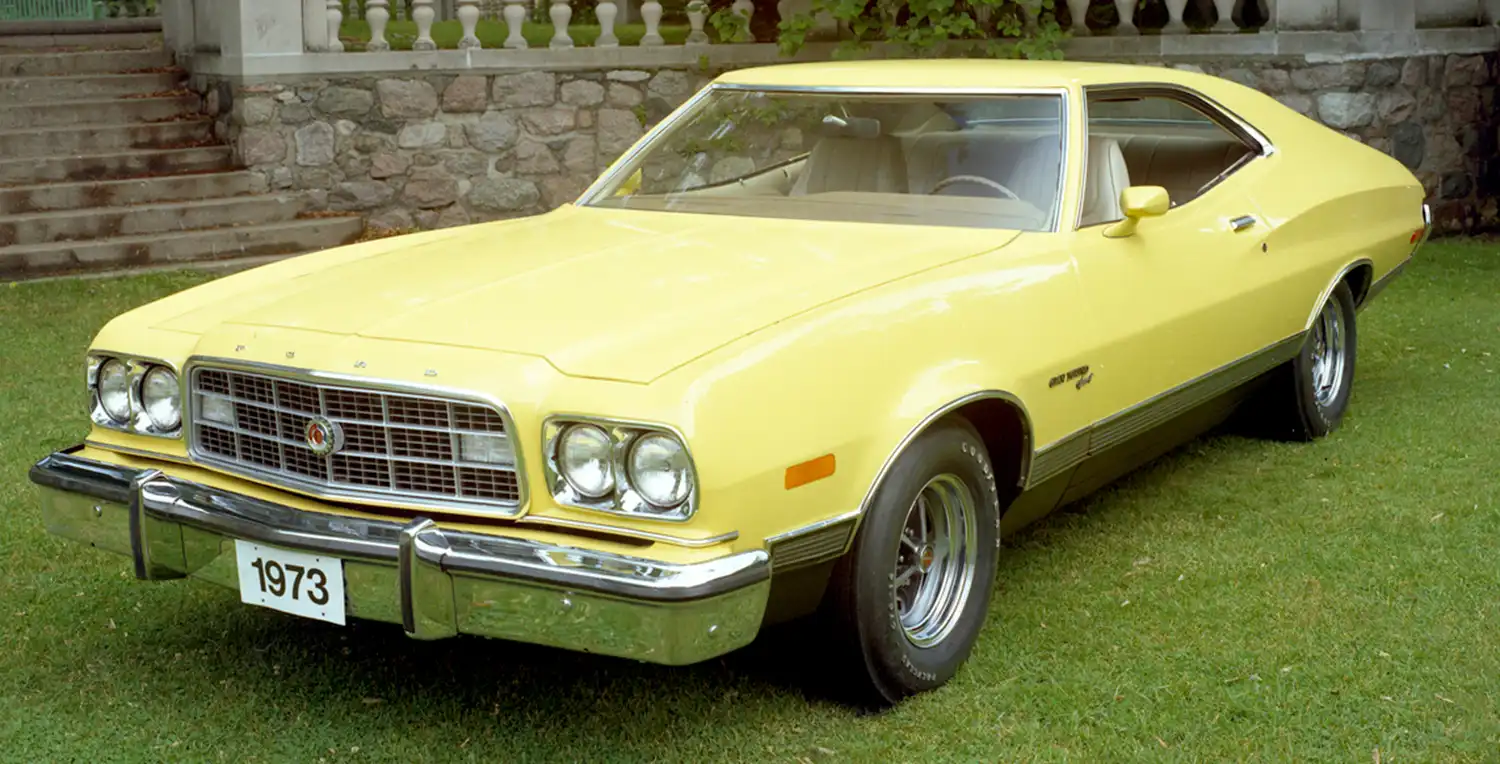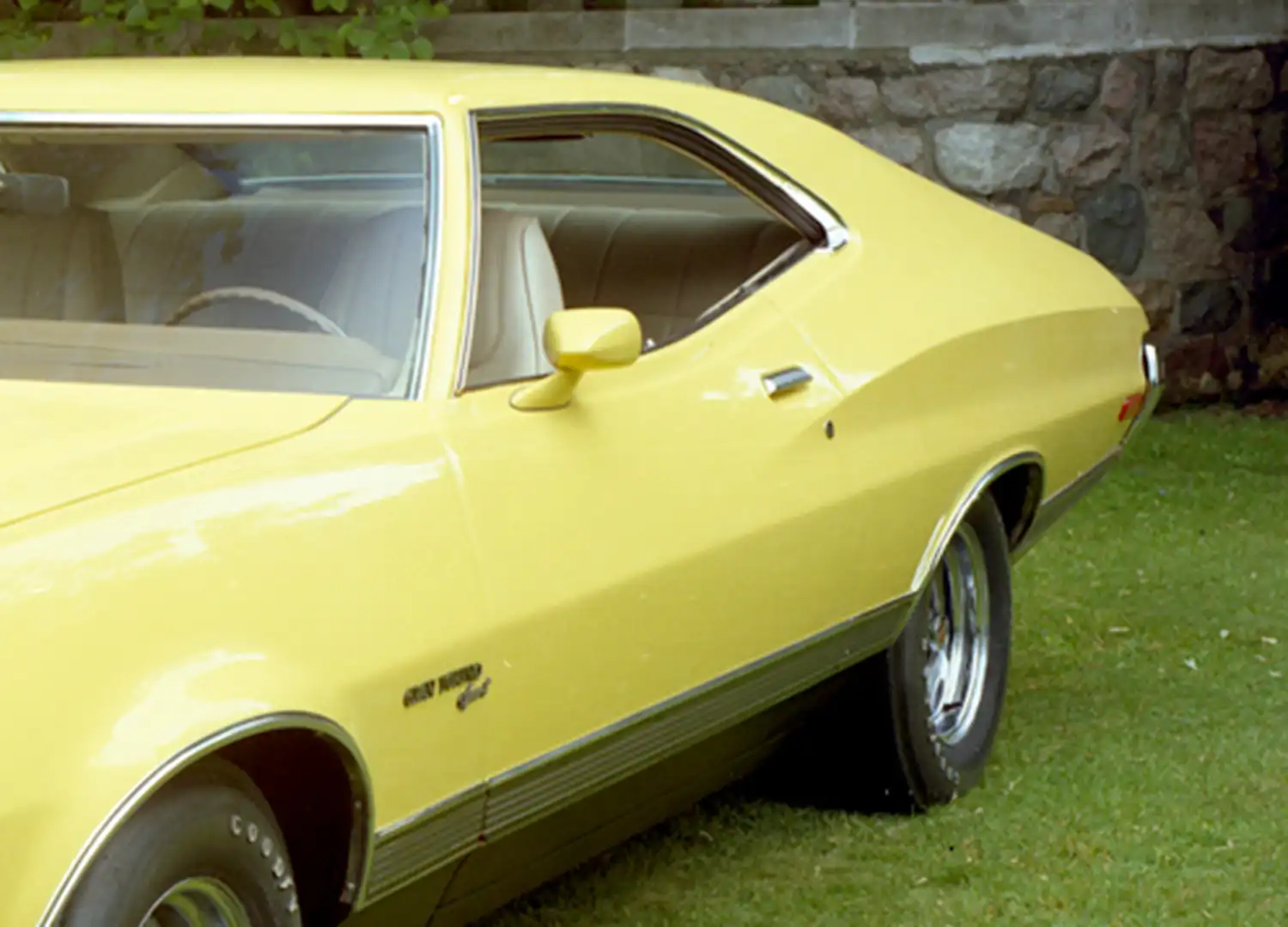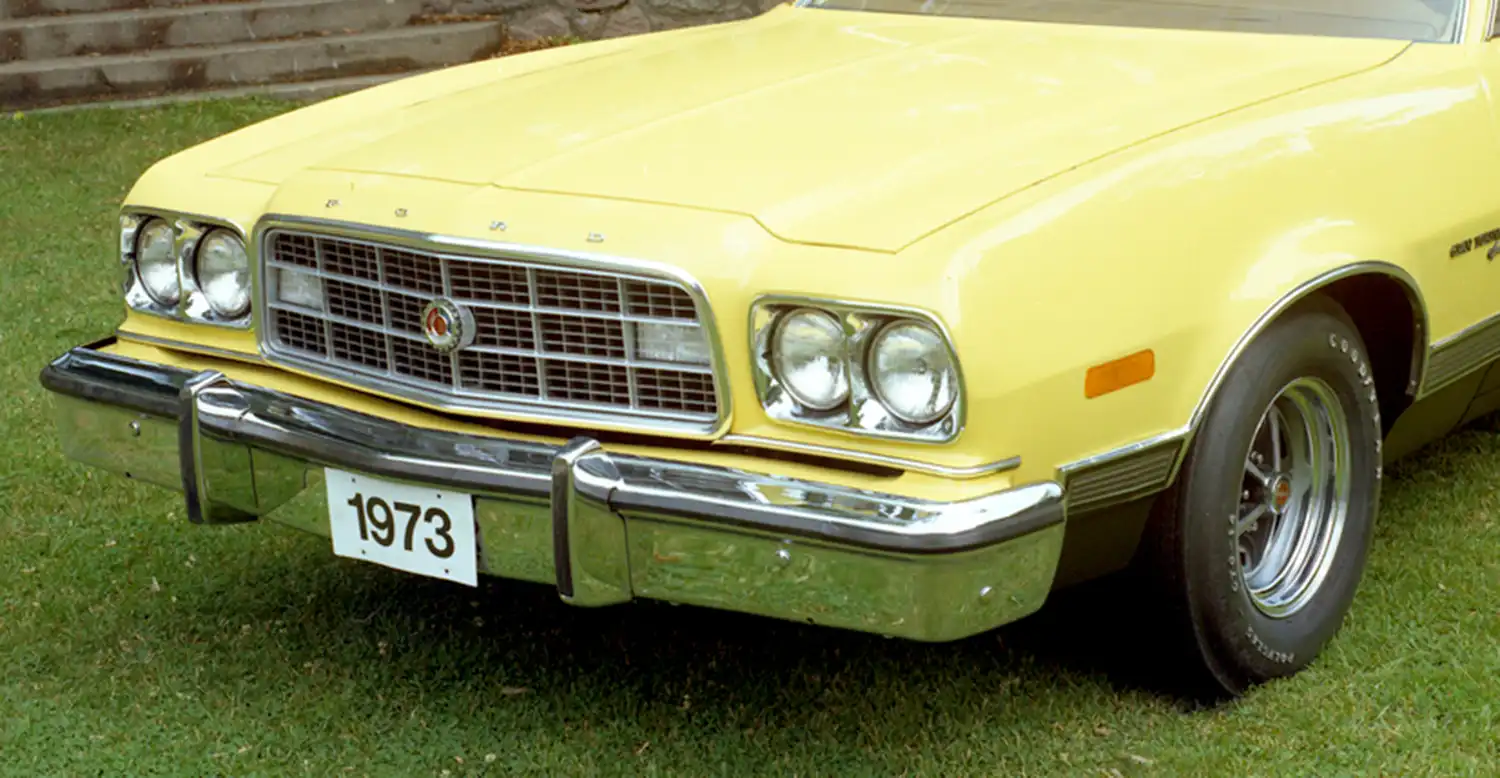
The Ford Gran Torino Sport, introduced in 1972 as part of the second generation of the Gran Torino line (which itself evolved from the Ford Fairlane), represented Ford’s contender in the popular mid-sized muscle car segment of the early 1970s. While the muscle car era was beginning to wane due to increasing emissions regulations and rising fuel costs, the Gran Torino Sport retained a sense of performance and aggressive styling that appealed to enthusiasts. The 1973 model year saw some minor styling updates from the initial 1972 design, including a revised front grille and bumper. Available in various body styles, including a two-door hardtop and a fastback coupe (often considered the most iconic), the Gran Torino Sport offered a range of engine options, allowing buyers to tailor the car to their preferences, from comfortable cruiser to potent street machine. Its combination of sporty looks and available V8 power helped solidify its place as a memorable vehicle of the decade.
Engine and Performance: The 1973 Ford Gran Torino Sport offered a selection of V8 engines, catering to different levels of performance. The standard engine was a 302 cubic inch (5.0L) V8, providing adequate power for everyday driving. However, for those seeking more muscle, Ford offered larger and more potent options. A popular choice was the 351 cubic inch (5.8L) Cleveland V8, known for its strong mid-range torque and respectable horsepower. The top performance engine available for the 1973 Gran Torino Sport was the 429 cubic inch (7.0L) Cobra Jet V8. This big-block engine delivered significant power and torque, making the Gran Torino Sport a formidable performer on the street. Depending on the specific engine and options, horsepower figures ranged from around 140 to over 260 net horsepower. The available transmissions included a three-speed manual, a four-speed manual, and a three-speed automatic (Ford’s Cruise-O-Matic). The performance-oriented models, especially those equipped with the 429 Cobra Jet and the four-speed manual, offered impressive acceleration and a classic muscle car driving experience. The Gran Torino Sport, even with the smaller V8s, provided a more engaging driving feel compared to the standard Gran Torino models, thanks to its sportier suspension tuning and available performance options.
Exterior Styling: The 1973 Ford Gran Torino Sport was characterized by its distinctive and somewhat aggressive styling. The two-door hardtop and fastback coupe body styles were particularly popular for their sporty appearance. The 1973 model year featured a revised front grille with a more prominent horizontal bar design compared to the 1972 model. Other styling cues included a muscular hood, often with optional NACA-style hood scoops, and a sleek roofline that flowed into the rear deck. The fastback coupe, in particular, had a long, sloping rear window that contributed to its aerodynamic and stylish profile. The Gran Torino Sport models typically featured unique trim elements, such as body-side moldings, specific badging, and sometimes a blacked-out grille or hood treatment to further differentiate them from the base Gran Torino. The overall design conveyed a sense of power and sportiness, aligning with the muscle car ethos of the era, albeit in a slightly more refined mid-sized package.

Interior Features: The interior of the 1973 Ford Gran Torino Sport aimed to provide a balance of comfort and a sporty feel. Depending on the options selected, the interior could range from relatively basic to quite well-equipped for the time. Available seating options included bench seats and more supportive bucket seats, often upholstered in vinyl or cloth. The dashboard layout was functional, with gauges providing essential information to the driver. The “Sport” designation often meant the inclusion of features like a floor-mounted shifter (if equipped with a manual or automatic transmission), a sporty steering wheel, and sometimes additional gauges or instrumentation. Options such as air conditioning, power windows, and an AM/FM radio were also available, allowing buyers to customize the comfort and convenience of their Gran Torino Sport. The overall interior ambiance reflected the trends of the early 1970s, emphasizing a blend of practicality and a touch of personal style.
Generational Context: The 1973 Ford Gran Torino Sport falls within the second generation of the Gran Torino, which ran from 1972 to 1976. This generation represented a significant styling departure from the first-generation Gran Torino (1970-1971), which was essentially a restyled Fairlane. The second generation featured a more rounded and substantial body design. The 1972 models introduced the “Sport” trim, which carried over with minor styling tweaks to the 1973 model year. Later years of the second generation saw further styling changes and a gradual shift away from high-performance engines as emissions regulations tightened. The 1973 model year is often seen as a transitional period, still offering potent engine options while facing the increasing pressures of the changing automotive landscape. The Gran Torino nameplate would continue into a third generation (1977-1979), with a further evolution in styling and market positioning.
Cultural Impact: The 1973 Ford Gran Torino Sport, particularly the fastback coupe, gained significant cultural recognition and enduring fame through its starring role in the popular 1970s television series “Starsky & Hutch.” The bright red Gran Torino Sport, with its distinctive white vector stripe, became an instantly recognizable icon of pop culture, further cementing the car’s place in automotive history. The show’s popularity exposed the Gran Torino Sport to a wide audience and contributed to its lasting appeal, even decades after its production ended. The image of Starsky and Hutch sliding across the hood of their Gran Torino remains a memorable symbol of 1970s action television.
Summary:
- Second generation of the Ford Gran Torino (1972-1976).
- Offered in two-door hardtop and fastback coupe body styles.
- Available V8 engines ranged from a 302 to a 429 Cobra Jet.
- Performance models featured sportier suspension and styling cues.
- Interior offered a blend of comfort and sporty options.
- Gained iconic status through the “Starsky & Hutch” television series.
Disclaimer: Vehicle specifications and performance figures can vary based on factory options and production variations. Consult specific vehicle documentation for the most accurate information.
Source: Ford Heritage Vault
AI Assistance: Gemini
